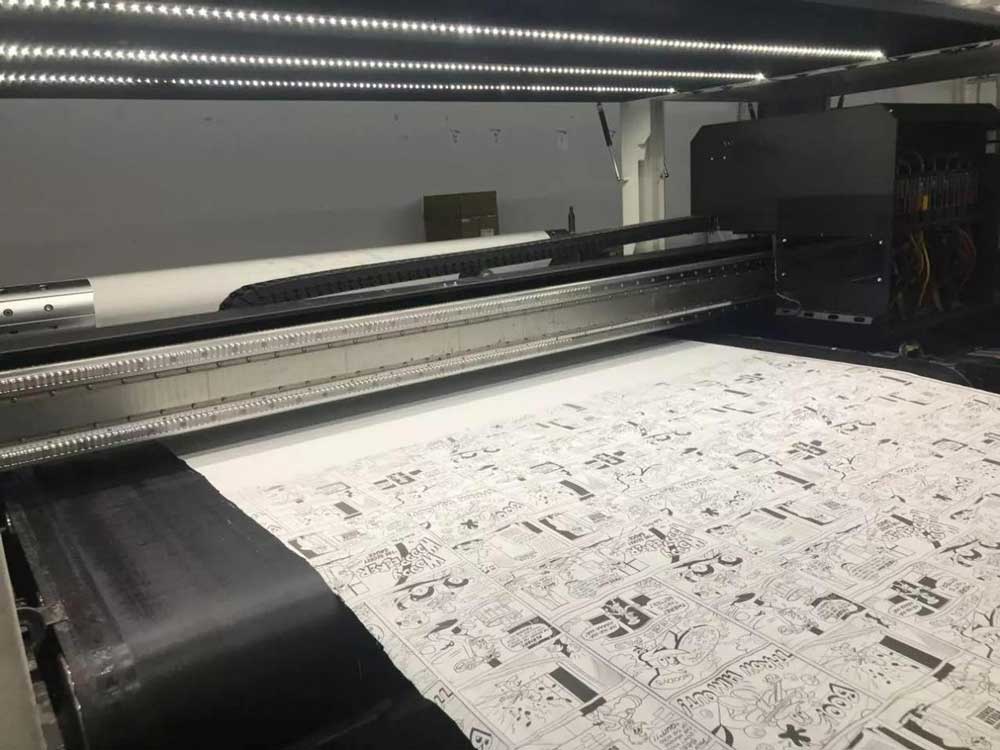 Apr 15,2025
Apr 15,2025
In the textile printing industry, we often encounter orders with low material costs and high processing fees, that is, high value-added orders. The processing fees for such orders are high because the printing is difficult. For example, the printing of pure cotton geometric patterns (mixed lines, grids, and dots) has many lines and blank spaces, and has high requirements for the clarity and sharpness of the pattern, which makes the printing process somewhat difficult.
The printing of geometric figures generally adopts the following processing methods:
1. Traditional Textile Printing Method
Rotary screen printing: Rotary screen printing is to print the color paste on the fabric through the mesh by rotating the rotary screen. For geometric figure printing, a high-precision rotary screen must be made first. According to the design pattern of the geometric figure, the technicians use laser engraving or inkjet plate making to make the corresponding mesh distribution on the rotary screen. During the printing process, the fabric contacts the rotating rotary screen under the traction of the guide belt, and the color paste is squeezed by the scraper and printed on the fabric through the mesh. However, this method may cause color misregistration and deformation of the figure for some geometric figures with rich details and complex figures.
Flat screen printing: Flat screen printing is to fix the fabric on the printing table and print by moving the flat screen up and down. When making the flat screen, the geometric pattern must be made into a screen, and the precision is required to be high. When printing, the color paste is placed on the screen, and the color paste is transferred to the fabric through the mesh through the scraper. However, the speed of flat screen printing is relatively slow, and for large geometric patterns, the pattern is prone to discontinuity at the splicing.
For printing geometric patterns on pure cotton fabrics, rotary screen printing and flat screen printing mostly use reactive printing or pigment printing.
2. Inkjet Digital Printing Method

Inkjet textile digital printing: Inkjet digital printing is a high-tech printing method that integrates multiple disciplines such as machinery, computer electronic information technology, and new materials, which has been formed with the continuous development of computer technology. It is a printing method that uses inkjet technology to directly print ink on fabrics to form patterns. It abandons the complex process of plate making required for traditional printing, and uses computer technology, inkjet control systems, precision machinery, and piezoelectric inkjet print heads to use thousands of piezoelectric nozzles at the micron level to print ink droplets directly on fabrics, greatly improving the accuracy of printing.
For printing of pure cotton geometric patterns, inkjet digital printing generally uses reactive ink printing or pigment ink digital printing.
Because the reactive printing process is inseparable from steaming and washing (including soaping at more than 90 degrees), in this process, it is inevitable that the fabric and the printed pattern will be deformed, seeped, etc. However, the pigment ink printing process does not require steaming and washing, and the accuracy of the printed pattern is guaranteed.
In summary, for printing of complex geometric patterns, it is recommended to use paint inkjet digital printing process. It is recommended that the printed semi-finished products should be treated with special pretreatment liquid for paint printing first, and then printed-dried-baked. After pretreatment, the ink sprayed on the fabric is locked by the pretreatment liquid and will not be free, ensuring sharp lines, saturated colors, and delicate patterns. The printing process is simplified, making difficult printing simple. Moreover, compared with round screen and flat screen printing, the one-time success rate is higher, and there will be no color misregistration and pattern deformation. At the same time, because paint digital printing is computer-controlled and does not rely on manual labor, it has better reproducibility, and the return order effect is reproduced smoothly. Repeated orders for the same pattern can also ensure the consistency of each order.
Because geometric printing patterns have many lines and many blank spaces, they are very suitable for inkjet printing. There is no need to make plates, which solves the problem of printing technology. Textile Inkjet printing is done on demand, so relatively less ink is required for printing and the cost is lower, so achieving high profits and high added value is relatively more guaranteed.